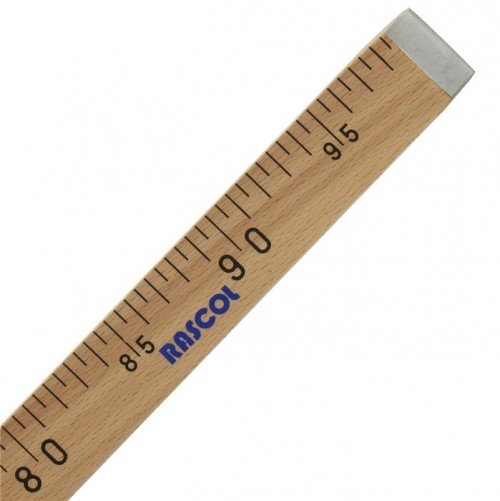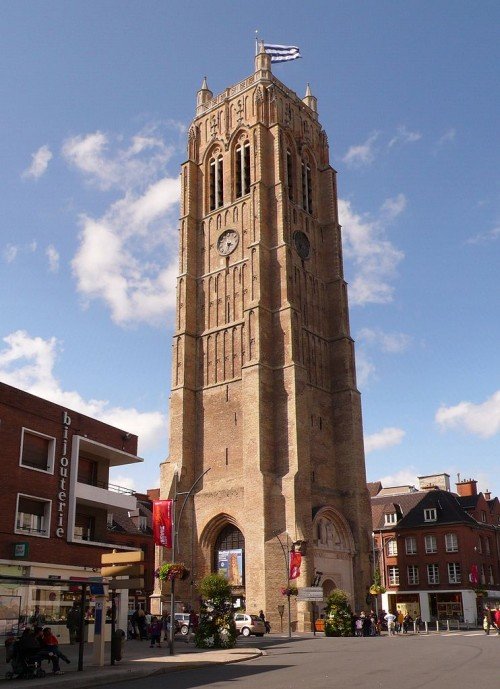Measurements: History of the Metre

source
See also:
History of the Metre
Yes, we are talking of the "metre", not the "meter". For everybody, except in the US, a meter is a device for measuring a physical quantity.
Ancient Units of Distance
Historically, the human body has been used to measure distances.
The two main units were the foot and the cubit.
It is believed that the Egyptians, the Ancient Indians and the Mesopotamians were using the cubit, that is defined as "the forearm length from the middle finger tip to the elbow bottom".
The Ancient Greeks and the Romans were using the foot.
However, there was no universally accepted length for the foot or the cubit.
The exact size of a foot varied from region to region and from city to city.
At the end of the 8th century, Charlemagne tried to standardized how to measure distance in his domain, using the "toise de l'Écritoire" equal to 6 feet of 326.6 mm. However, he was unsuccessful.
Calls for a universally accepted unit
With the development of science in the 17th century, there were calls for the institution of a universally accepted unit of distance:
- Tito Livio Burattini, an Italian scientist, published in 1675 a book " Misura universale (universal measure). His system included a distance unit named "metro catolico" (universal metre) that differed from the modern metre by half a centimetre. He is considered the first to recommend the name metre for a unit of length.
- John Wilkins in 1688 also proposed a decimal system of measures.
However, the first attempt to define what is now the metre was done during the French Revolution.
First Definition: the Mètre des Archives
Like in most other countries, the proliferation of different units in the regions and cities in France was a problem for the centralized government.
One proposal was to use the length of the pendulum with a period of exactly 2 seconds, at the latitude of 45°N.
The government asked the French Academy of Sciences, that appointed a commission chaired by Jean-Charles de Borda. The commission included several well known scientists such as Joseph-Louis Lagrange, Pierre-Simon Laplace and Gaspard Monge.
Borda was a strong proponent of a decimal system. For him, the second, not being a decimal division, was a poor choice for the base of a measuring unit. Instead of the length of a pendulum, the commission proposed as a universal distance unit
one ten-millionth of the distance from the North Pole to the Equator, measured along the meridian passing through Paris.
To know the exact distance of the distance from North Pole to Equator, surveyors were tasked to measure exactly the distance between two points: the belfry of Dunkirk and the Montjuïc Castle in Barcelona, Spain.

Belfry of Dunkirk

Montjuïc Castle
Those two points do not have exactly the same longitude, but the difference is small. To know the difference of latitudes, you only need to get the elevations of the sun on the same day when it is at its highest, that is when it is exactly South.
The surveyors took six years, from 1792 to 1798, to measure the distance.
In the mean time, knowing approximately the result, the commission ordered several platinum bars of slightly different lengths for the new unit: the metre. Then, when the exact distance was known, the platinum bar that was the closest to the result of the survey was
selected and placed in the National Archives on 22 June 1799 as a permanent record of the result. This standard metre bar became known as the "mètre des Archives".
Although the metric system became the official system of units in France in 1801, its use was not immediately accepted in the whole country, until the middle of the 19th century. And even in the 1950s, my mother was still buying at the public market "une livre de beurre" (one pound of butter) with a pound being 500 grams.
Starting in 1816 with the Netherlands, several nations adopted the French metric system.
Although it was soon realized that the mètre des Archives was not exactly the "one ten-millionth of the distance from the North Pole to the Equator", its still stayed as metre prototype until it was replaced by a new one.
International prototype metre
With more countries adopting the metric system, there was a need to have a better metre prototype than the mètre des Archives. In 1875, the Metre Convention, signed in Paris, created the "Bureau international des poids et mesures" (BIPM), an international organization, based in Sèvres, just outside Paris.
The BIPM is not controlled by the French government, but by a diplomatic conference, the "Conférence générale des poids et mesures" (CGPM).
The new prototypes were made in a special alloy, 90% platinum and 10% iridium, by the London firm of Johnson Matthey who produced thirty bars to the required specification. Bar number 6 was found to be the exact same length and was made the new official prototype metre.
When I was in elementary school, in France, in the 1950s, I learned that the metre was defined as the length of this prototype metre.
Krypton Standard
Having the metre defined as the length of a physical prototype, even a fairly stable one, is not entirely satisfactory. So, a better definition of the meter was looked for, based on some physical phenomenon.
At the beginning of the 20th century, progress in interferometry made it possible to measure the very small wavelengths of radiations. The American physicist Albert A. Michelson was able to measure the prototype meter within less that 0.1 µm, using the red line of cadmium. In 1907, Michelson was the first American to receive the Nobel Prize in Physics, and this measurement was one of the reason.
In the 1950s, more experiments were conducted, and it was found that the orange line of krypton-86 was more stable than the red line of cadmium.
So, in 1960, at the 11th General Conference on Weights and Measures (CGPM), a new definition of the metre was adopted:
- The metre is the length equal to 1 650 763.73 wavelengths in vacuum of the radiation corresponding to the transition between the levels 2p10 and 5d5 of the krypton 86 atom.
Speed of light standard
During the 1960s and 1970s, using lasers, progress was made to measure the speed of light in vacuum with great accuracy.
In 1975, at the 15th CGPM, it was decided to give the conventional value of the speed of light as exactly 299,792,458 m/s.
And in 1983, the 17th CGPM adopted the current definition of the metre:
- The metre is the length of the path travelled by light in vacuum during a time interval of 1 ⁄ 299,792,458 of a second.
This definition could not have been given without the progress that has been made in defining the second. See History of the Second.
Sources:

It does look informative, but I'm not able to read now :D. I'm a sleepy curator :D
No problem, @j3dy, read it any time when you are awake.
@vcelier you really like Math :)
i take my hat off you - Math dislikes me so am trying to embrace it :D